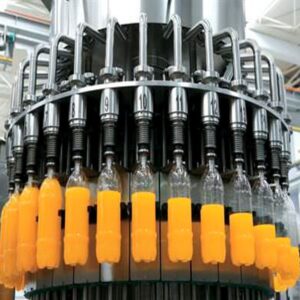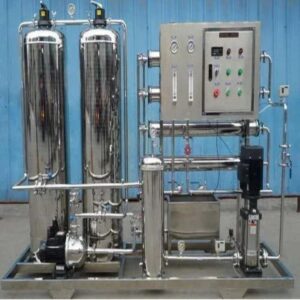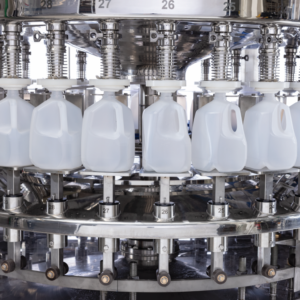Description
-
-
Specification Description Machine Type Automatic Liquid Soap Filling Machine Capacity Variable, customizable based on requirements Filling Volume Range 50 ml to 1000 ml (adjustable) Filling Accuracy ± 1% of the set volume Material Stainless steel (304 or 316, depending on application) Power Supply 220V, 50/60Hz (customizable upon request) Power Consumption Depends on the machine’s size and features Air Pressure 0.6-0.8 MPa Air Consumption 0.6 m³/min Control System PLC (Programmable Logic Controller) with touchscreen Filling Nozzles Stainless steel, adjustable for different container sizes Conveyor System Variable speed conveyor belt Filling Speed Adjustable, up to [specify] bottles per minute Cleaning CIP (Clean in Place) system Safety Features Emergency stop, safety guards, overload protection Dimensions (LxWxH) Variable based on model, typically [specify] meters Weight Variable, depending on model and capacity Certification CE compliant, FDA compliant (if applicable) Optional Features Bottle cap tightening, bottle labeling, bottle capping - In the current production sphere, the use of liquid soap-filling machines is commonplace. This is mainly in industries that produce large quantities of liquid soap products. Such equipment mechanizes the process of filling containers with liquid soap ensuring exactitude, speed, and uniformity in the manufacturing process. In this complete guide, we will be looking at various kinds of liquid soap filling machines, their workings in different industries, functions across sectors, benefits as well as future trends shaping its direction.
-
-
-
Types of Liquid Soap Filling Machines
-
-
- Different types of liquid soap filling machines are available to suit the varying needs and requirements involved in production. There are several main types:
-
- Overflow Filling Machines: These are used when working with watery liquids like liquid soap. They work by filling a container up to a certain level and then allowing excess fluid to overflow so that accurate fill levels are maintained.
-
- Piston Filling Machines: These machines are perfect for dispensing viscous substances like hand soaps, gels, and creams. The piston technology dispenses an accurate amount of a desired volume into a container.
-
- Gravity Filling Machines: These machines apply gravity force to fill containers with liquid soap they work best on thin viscosity up to medium viscous liquids thus great speed for filling.
-
- Peristaltic Pump Filling Machines: Peristaltic pump filling machines can be used to fill any type of viscosity including water-like or high-viscosity fluids hence suitable for small-scale operations or laboratory applications.
-
- Net Weigh Filling Machines: A net weigh-filling machine is designed such that it weighs the content as it gets dispensed into a vessel ensuring there’s no wastage when it comes to weight accuracy, especially in industries.
-
-
Working Process of Liquid Soap Filling Machines
- The working process depends on the particular type of liquid soap-filling machine being employed. However, there are basic steps involved in the filling operation which include;
-
-
- Container Placement: Containers without anything inside them get placed on the machine’s conveyor or filling platform.
-
- Liquid Soap Supply: The filling machine may have a reservoir from where liquid soap is filled and/or it can be connected directly to the line that carries this product.
-
- Filling Operation: The liquid soap filling machines are of various types each with a different mode of operation such as overflow, piston, gravity, peristaltic pump or net weigh type.
-
- Container Capping or Sealing: After filling the containers can be capped to prevent leaks and preserve product quality.
-
- Labelling and Packaging: These containers go through another process at a labeling station after they have been filled and sealed.
-
-
Applications of Liquid Soap Filling Machines
-
-
- Liquid soap-filling machines are used in many industries that manufacture liquid soaps. The key sectors in which these machines are widely utilized include:
-
- Personal Care and Cosmetics: Liquid soap filling machines are used extensively in making hand soaps, body washes, shampoos, and conditioners among others for personal care purposes.
-
- Household Cleaning Products: Producers of household cleaning commodities use liquid soap-filling equipment when putting dishwashing liquids, laundry detergents, surface cleaners, and all-purpose cleaners into bottles.
-
- Industrial and Institutional Cleaning: Liquid soap filling equipment is used to pack large quantities of hand sanitizers, antibacterial soaps as well as industrial cleaners in industries like hospitals, hotels, and restaurants.
-
- Pharmaceuticals and Healthcare: Filling liquid medicine, antiseptics, and other healthcare products in containers is an important role played by the liquid soap filling machines in the pharmaceutical and healthcare sectors.
- Food and Beverage: Liquid food items like soups, syrups, oils, and beverages such as wines are also filled using liquid soap-filling machines in the food and beverage industry.
-
What Liquid Soap Filling Machines Do
- To make production processes efficient and effective, several functions of liquid soap filling machines come into play. Some of these important roles include:
- Accuracy in Filling: Consistency is key to these machines since they fill containers continuously well thus reducing wastages which ensure that the quality of a product is maintained.
- High Productivity Rates: This equipment can work at high speed allowing producers to have more stock produced within shorter durations hence meeting market demand effectively.
- Unlimited Variety: Different types of containers with various shapes, sizes, or even compositions can be accommodated by such machines thereby making them useful in many industries.
- Automated systems: The amount of labor needed for filling jobs is reduced with these automated systems hence productivity increases while costs come down.
- Quality Management: They incorporate features including sensors and monitors that identify faults in the process so that corrective actions can be taken accordingly.
-
Benefits from Liquid Soap Filling Machines
- There are numerous advantages to be realized when manufacturers adopt liquid soap-filling machines. They include:
- Improved Efficiency: Better efficiency can be achieved through streamlining production processes which reduces lead times during manufacturing as well as increasing outputs.
- Reduced Production Costs: In addition to being error-free, these tools minimize wastage of resources as well as manual inputs making the whole process cheaper for business owners who want to maximize profits.
- Better Products Quality: These allow for accuracy in quantity measurements during refills resulting in excellent quality products that meet customer expectations always.
- Conformity with Safety Rules and Regulations: Liquid soap filling machines comply with safety regulations and other industry standards.
- Easily Expandable: Therefore, it is easy for manufacturers to increase or reduce production with the help of these devices depending on market demand changes and without changing the product’s whole range.
-
Future Trends in Liquid Soap Filling Machines
- The following future directions will define liquid soap filling machines:
- Internet of Things (IoT) and Industry 4.0 Technologies Integration: Real-time monitoring predictive maintenance, as well as data-driven optimization of manufacturing processes, are some of the things that we expect liquid soap filling machines to be able to do by incorporating IoT technology.
- Automation Enhanced by Robotics: Such tools could be more efficient when they are more automated through robotics which allows them to integrate with other production systems seamlessly.
- Customization and Personalization: Companies would want more customization options from these machines that can suit the evolving tastes of customers besides targeting niche markets.
- Sustainability and Environmental Considerations: Manufacturing is increasingly focusing on eco-friendliness. This includes making use of green materials, energy-saving technologies, and recyclable packing options among others in manufacturing future liquid soap filling machines.
- Advanced Materials and Designs: Future developments in material science together with engineering may result in innovative machinery comprising lighter parts than those used today; thus saving space required for installation and decreasing power usage significantly.
-
Frequently Asked Questions
-
What is a liquid soap filling machine?
- A liquid soap filling machine refers to a machine designed for use in manufacturing to dispensing properly measured quantities of liquid soap into containers, bottles, or pouches.
-
What are the different kinds of liquid soap-filling machines?
- Various kinds of liquid soap filling machines are available including overflow filling machines, piston pump filling machines, gravity-fed filling machines, peristaltic pump fillers, and net weigh fillers.
-
How do they work?
- These devices work using either gravity-fed systems, piston mechanisms, overflow technology, peristaltic pumps, or even net weight scales used to accurately fill containers with liquid soap.
-
Who uses the equipment?
- Industries that utilize this equipment are personal care and cosmetics sectors; household detergents; industrial & institutional cleaning companies; pharmaceuticals and healthcare organizations; and food & drink manufacturers amongst others.
-
What are the advantages of using them?
- Such benefits include increased efficiency as well as cost savings because of economies concerned with process effectiveness; improved product quality; conformity to safety regulations; and scalability in production activities.
-
What should I look for when purchasing one?
- The main qualities to consider when buying include accurate dosage capabilities; high-speed performance; adaptability in terms of different container dimensions; automation options and consistency with standards applied in the relevant sector.
-
Are there any machines that can cater to small-scale production processes?
- Some brands specifically target smaller businesses looking forward to easing operation flexibility and affordability.
-
How can I take care of it?
- To prolong its life span and ensure that it operates effectively regular maintenance must be carried out including inspection, cleaning, and greasing of its components.
-
Can they handle various types of formulations?
- They handle various types including thin liquids through thick gels up creams among other viscosities such as baby shampoo or lotion etc.,
-
What will be the future trends on them?
- Those could entail things like IoT integration,& industry 4.0 technologies; more automated systems and robots, customization/personalization features, green initiatives as well as new materials and designs.





